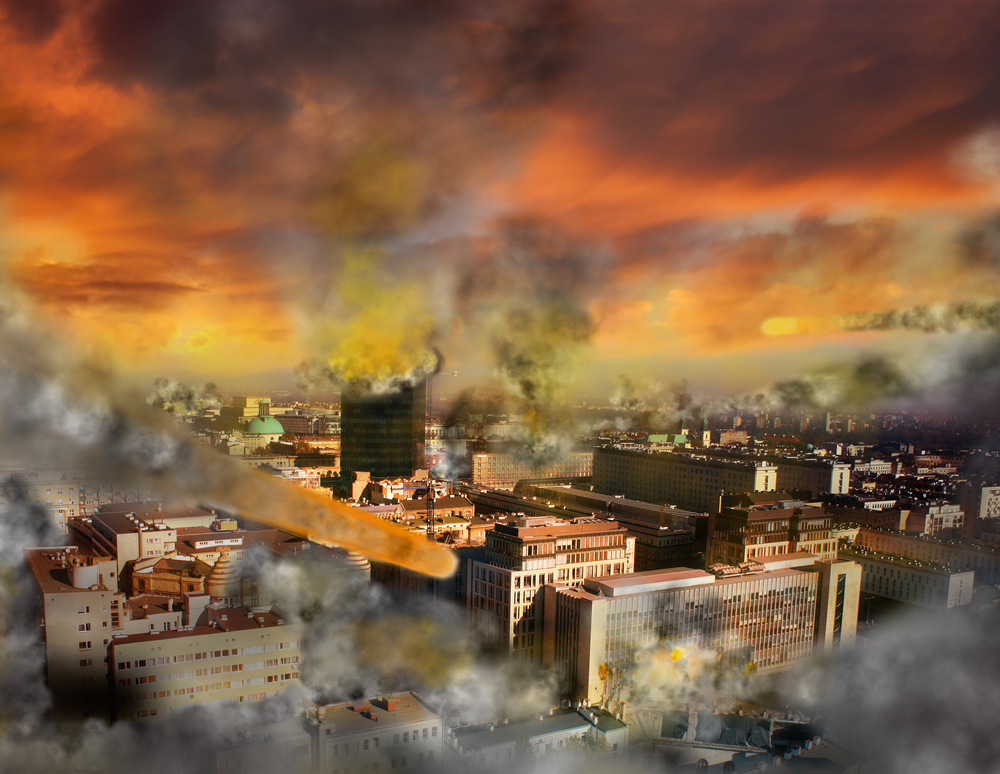
SAN FRANCISCO — Quick: In the event of a zombie apocalypse, how would you make it out of New York City alive?
If you're like most New Yorkers, you probably have no idea. But a small group of folks in the city are gearing up for the next doomsday scenario by prepping survival gear, planning escape routes, and training to get out of New York City — even by inflatable kayak if necessary.
These urban doomsday preppers look very different from the stereotype of the rural, gun-toting conservative depicted on shows such as "Doomsday Castle," Anna Maria Bounds, a sociologist at Queens College, City University of New York, said on Monday (Aug. 18) here at the 109th annual American Sociological Association meeting.
Instead of creating a self-sustaining fortress for their families, urban survivalists focus on getting out quickly. [Doomsday: 9 Real Ways Earth Could End]
"They simply don't have the space to build a bunker," Bounds told Live Science.
Urban survivalists also worry less about government conspiracies and end-of-days scenarios, and instead plan for threats, such as terrorist attacks or natural disasters, that have already materialized, Bounds said.
Urban survival
Get the world’s most fascinating discoveries delivered straight to your inbox.
Bounds first became interested in urban survival after experiencing firsthand the disarray in New York after Sept. 11, and then again during Hurricane Sandy.
She and her colleagues began studying and attending meetings of the NYC Preppers, a group of people who help train others to survive emergencies ranging from terrorist attacks to hurricanes to a global pandemic. An upcoming meeting, for instance, is focusing on how to deal with a potential Ebola pandemic.
The researchers soon noticed that these "urban preppers" look very different from the pop-culture depiction of survivalists: The armed, white, male, conservative Christian militia members who fear the government, she said.
Urban preppers usually don't own guns, their political views are all over the map, and they are often people of color, Bounds said. Many have seen firsthand, in disasters such as Hurricane Katrina, how long it can take for local and federal government agencies to restore order, she said.
Urban survivalist culture also overlaps with sustainability and homesteading culture. Many preppers are interested in organic and local foods, farmers' markets and the reduction of toxic chemicals. Some meetings, for instance, have focused on such things as how to make deodorant and laundry detergent at home, she said.
Bug out
Few New Yorkers are going to cram their fifth-floor walkup with 500 pounds (227 kilograms) of food (one estimate of how much food a person would need to eat for a year). So survivalists focus on getting out of the city fast.
One simple step is to make sure the car (if you have one) is always filled with gas and that medical prescriptions are always filled. Urbanites should also look around their apartments and figure out what would work in different emergencies, Bounds said. For instance, is the stove gas or electric? What services would a power outage eliminate?
Another essential for a mass New York exodus is to have a "bug-out" bag ready. This bag is typically a backpack filled with several days' worth of survival gear that weighs between 20 and 25 pounds (9 to 11 kg). Typical items in a bug-out bag include water filtration systems, food and water, face masks and goggles to protect against airborne hazards, compasses and duct tape. Preppers go on long treks during all seasons to make sure they can carry them for extended periods, Bounds said. [See The Items Needed for a Bug Out Pack]
Urbanites should also plan their escape route, which includes knowing how to evacuate a tall apartment building when the power goes out, and how to get out on foot, Bounds said.
Manhattan is an island with just nine bridges and four tunnels off the island, and a workday population of more than 3.1 million, which means there could be several chokepoints in the event of a disaster, she said. Some people even have inflatable kayaks on hand just in case. The best escape routes will depend on someone's origin and destination, but preppers often talk about the Catskills or even Upstate New York as potential safe havens, Bounds said.
Either way, it's important to have a plan and to be self-sufficient — something that may not come naturally to many New Yorkers, Bounds said.
"What you have to understand about New Yorkers is we're used to convenience and we're used to immediate gratification," Bounds said. "So to get our arms around the idea that we may have to be roughing it? Roughing it, for us, is not having takeout."
Follow Tia Ghose on Twitter and Google+. Follow Live Science @livescience, Facebook & Google+. Original article on Live Science.

Tia is the editor-in-chief (premium) and was formerly managing editor and senior writer for Live Science. Her work has appeared in Scientific American, Wired.com, Science News and other outlets. She holds a master's degree in bioengineering from the University of Washington, a graduate certificate in science writing from UC Santa Cruz and a bachelor's degree in mechanical engineering from the University of Texas at Austin. Tia was part of a team at the Milwaukee Journal Sentinel that published the Empty Cradles series on preterm births, which won multiple awards, including the 2012 Casey Medal for Meritorious Journalism.


